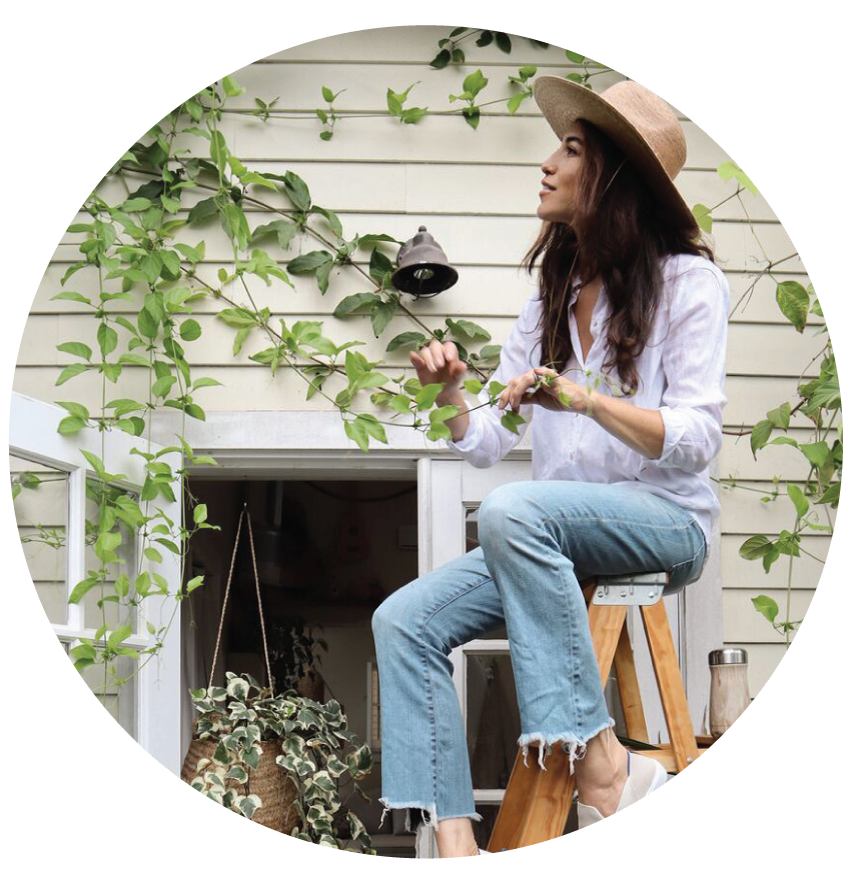SOME ITEMS YOU CAN PROBABLY GO WITHOUT (PART 14)
In recent years, the average size of the American single-family home has grown to over 2,600 square feet. As I walk around our neighborhood and see the smaller, still livable, single-story bungalows being torn down and replaced with zero-lot-line behemoths, I can’t help but wonder why… (For investment purposes? And if so, to what end, ultimately?)
Not only are we living in an unprecedented time during which we have to do everything necessary to curb our emissions and consumption to combat the climate crisis, but we are also living in a technological era in which entire collections of goods that once lived in our homes are now contained within our smart devices.
If we’re spending more time absorbed in our phones and less time interacting with the tangible, and if items such as movies, music collections, reference guides, books, photo albums, and more all live digitally, why do our homes need to further expand? And expand in ways that are often highly environmentally burdensome?
Of course it's important to note that a bigger house doesn't necessarily mean more stuff, and that I am indeed excited about green construction in the future. Homes that operate with renewable energy, “smart” features that keep energy down and efficiency high, and self-sustaining systems that better manage waste while generating power and resources are possibilities on the horizon. I’m not suggesting that tiny houses/apartments are “the” answer or suitable for everyone.
Our son is only 3, and as I type this post, he is the only child in our household. I have yet to live this tiny life as a parent of a pre-teen/teen or of multiple children. One day, one way or another, my family's needs and tastes will change, and I have no idea what’s next for us.
But as we adapt to the future, I plan to keep in mind that leaving behind a sprawling home filled with stuff for my son is not my goal, whereas leaving behind a healthy Earth for his entire generation is.
With that, here are some home / kitchen items you can probably go without, whether you live in a big house or a small one. (View all the entries in this series here.)
Bathtub Caddy, Shower Novelty Stands/Holders
If you regularly relax in the tub with a book and some tea or wine and that’s your form of self care, then good for you— keep it going. But if you only take a bath every now and then (hooray for conserving water!), perhaps consider skipping the luxury bathtub caddy and novelty suction cup drink holders. A little table or stool pulled up next to your tub can work juuuuust fine.
Tea Bag Coasters, Holders, etc.
A tea bag can survive on a plate or saucer and certainly doesn’t need it’s own dedicated accessory, such as those over-the-rim slings or ramekin-style holders. Better yet, skip the tea bags altogether and opt for looseleaf to reduce waste and avoid the microplastics and nanoplastics that can be released into your mug from the bags.
Encyclopedias, Maps, Translator Guides, Dictionaries
While I love a good wall of books in a home or office, I have to admit— most of them aren’t necessary. (Like I’ve said before, I still prefer to read on paper, but that doesn’t mean I need to buy or hold on to every title like a beautifully bound trophy.) Thanks to libraries and digital resources, we can stop acquiring new volumes of encyclopedias, dictionaries, translator guides, maps, and so forth.
Dish Drying Rack
A simple drying mat (or even a towel) or an over-the-sink roll-up rack can function just as well without eating up inches.
Nail polish + lipstick holders
As with any dedicated organizer, these sorts of things (usually made of acrylic) frustrate me. Due to their specific dimensions and design, they basically serve only ONE (unnecessary) function only, rendering them useless for anything else if your beauty needs, tastes or habits change. It’s likely that numerous items already available within your home can hold these products for you— no new purchase required.








